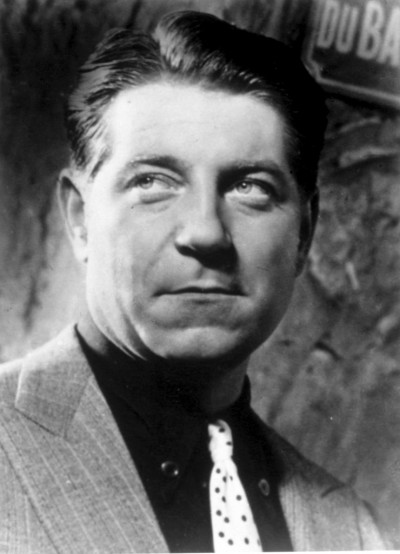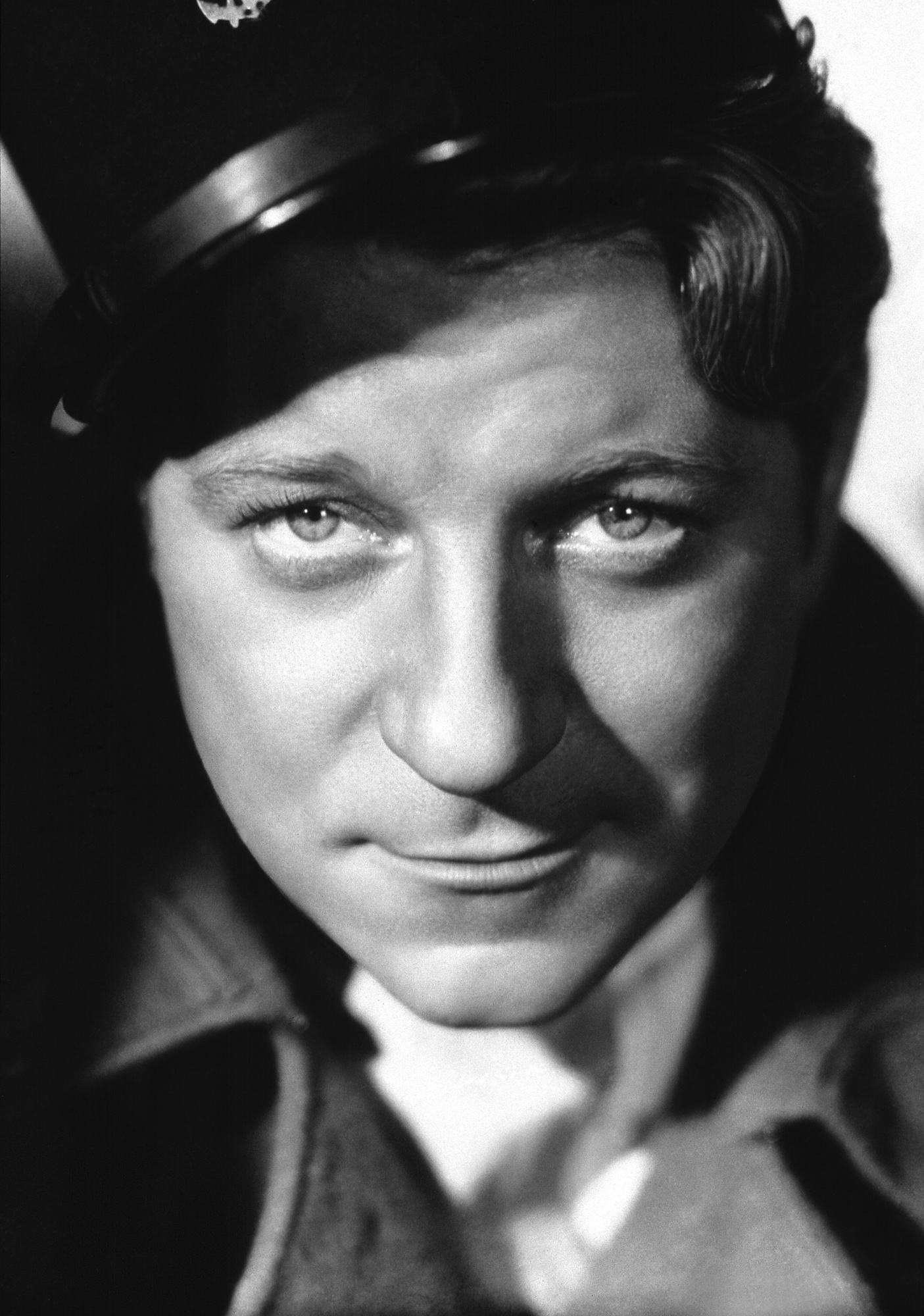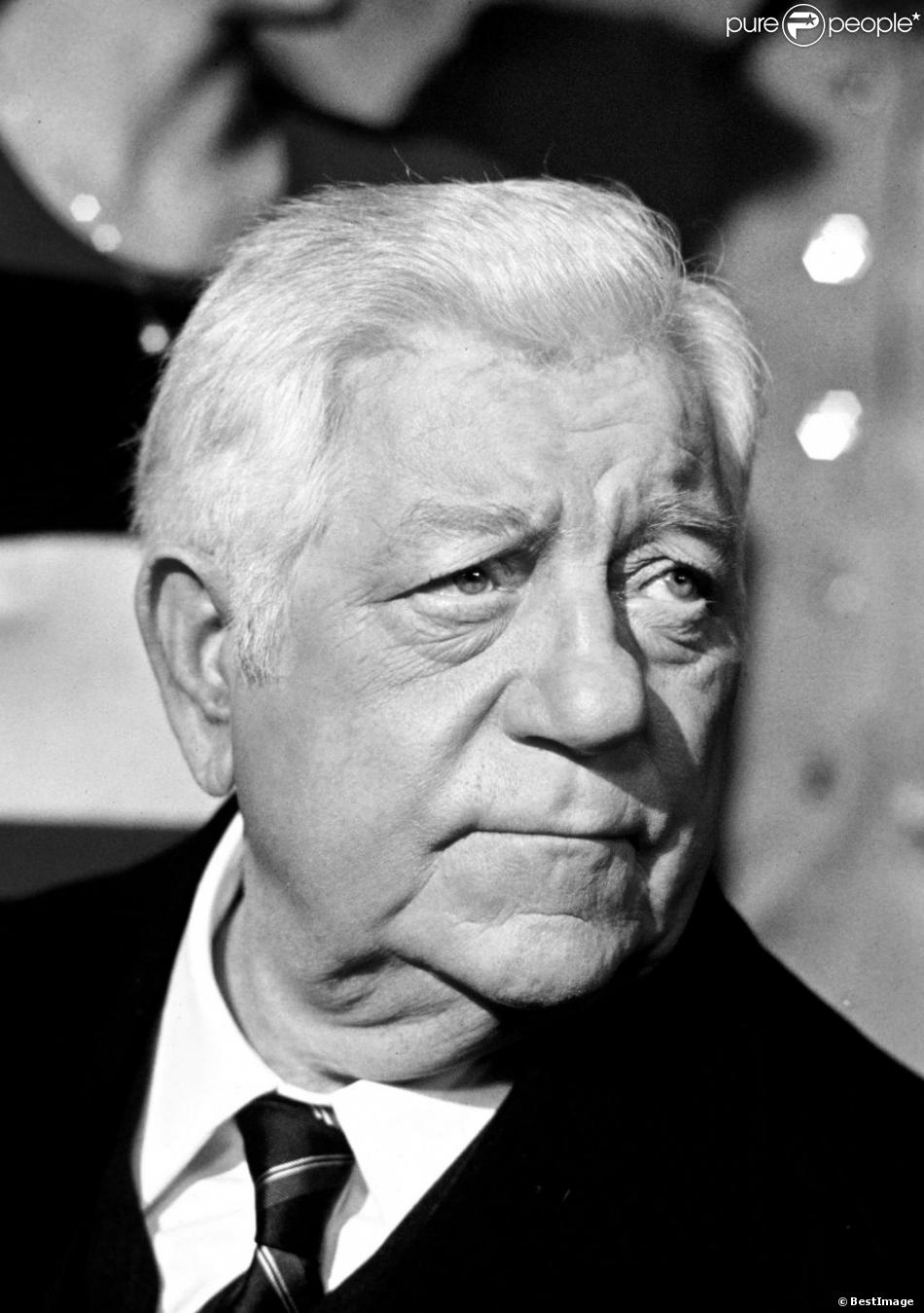Jean Gabin (Jean-Alexis Moncorgé)

Gabin was born Jean-Alexis Moncorgé in Paris, the son of Madeleine Petit and Ferdinand Moncorgé, a cafe entertainer whose stage name was Gabin. He grew up in the village of Mériel in the Seine-et-Oise (now Val-d’Oise) département, about 22 mi (35 km) north of Paris. The son of cabaret entertainers, he attended the Lycée Janson de Sailly. Leaving school early, he worked as a laborer until the age of 19 when he entered show business with a bit part in a Folies Bergères production. He continued performing in a variety of minor roles before going into the military. After completing his military service, Gabin returned to the entertainment business, working under the stage name of Jean Gabin at whatever was offered in the Parisian music halls and operettas, imitating the singing style of Maurice Chevalier, which was the rage at the time. He was part of a troupe that toured South America, and upon returning to France found work at the Moulin Rouge. His performances started getting noticed, and better stage roles came along that led to parts in two silent films in 1928. Two years later, he easily made the transition to talkies in a 1930 Pathé Frères production titled Chacun sa Chance. Playing secondary roles, Gabin made more than a dozen films over the next four years, including films directed by Maurice and Jacques Tourneur. However, he only gained real recognition for his performance in Maria Chapdelaine (fr), a 1934 production directed by Julien Duvivier. Cast as a romantic hero in a 1936 war drama titled La Bandera, this second Duvivier-directed film established Gabin as a major star. The following year, he teamed up with Duvivier again, this time in the highly successful Pépé le Moko; its popularity brought Gabin international recognition. That same year, he starred in the Jean Renoir film La Grande Illusion, an anti-war film that ran at a New York City theatre for an unprecedented six months. This was followed by another one of Renoir’s major works: La Bête Humaine (The Human Beast), a film noir tragedy based on the novel by Émile Zola and starring Gabin and Simone Simon, as well as Le Quai Des Brumes (Port of Shadows), one of director Marcel Carné’s classics of poetic realism. He was divorced from his second wife in 1939.
Flooded with offers from Hollywood, for a time Gabin turned them all down until the outbreak of World War II. After the German occupation of France in 1940, he joined Jean Renoir and Julien Duvivier in the United States. During his time in Hollywood, Gabin began a torrid romance with actress Marlene Dietrich which lasted until 1948. However, his films in America – Moontide (1942) and The Impostor (1944), the later reuniting him with Duvivier – were not successful. A difficult personality, he did serious damage to his Hollywood career while working for RKO Pictures. Scheduled to star in an RKO film, at the last minute he demanded Dietrich be given the co-starring role. The studio refused. After Gabin remained steadfast in his demand, he was fired, and the film project was shelved. Undaunted, Jean Gabin joined General Charles de Gaulle’s Free French Forces and earned the Médaille militaire and a Croix de guerre for his wartime valor fighting with the Allies in North Africa. Following D-Day, Gabin was part of the military contingent that entered a liberated Paris. In 1946, Gabin was hired by Marcel Carné to star in the film, Les Portes de la Nuit, but his conduct got him fired again. He then found a French producer and director willing to cast him and Marlene Dietrich together, but their film Martin Roumagnac was not a success and their personal relationship soon ended. Following another box office failure in 1947, Gabin returned to the stage, but there too, the production was another financial disaster. Nevertheless, he was cast in the lead role of the 1949 René Clément film Au-Delà Des Grilles that won the Academy Award for Best Foreign Language Film. Despite this recognition, the film did not do well at the French box office, and the next five years brought little more than repeated box office failures.
Gabin’s career seemed headed for oblivion. However, he made a comeback in the 1954 film, Touchez pas au grisbi (Don’t Touch the Loot). Directed by Jacques Becker, his performance earned him critical acclaim, and the film was a very profitable international success. Later, he worked once again with Jean Renoir in French Cancan, with María Félix and Françoise Arnoul. Over the next twenty years, Gabin made close to 50 more films, most of them very successful commercially and critically, including many for Gafer Films, his production partnership with fellow actor Fernandel. His co-stars included leading figures of post-war cinema such as Brigitte Bardot (En cas de malheur), Alain Delon (Le Clan des Siciliens, Mélodie en sous-sol and Deux hommes dans la ville), Jean-Paul Belmondo (Un singe en hiver) and Louis de Funès (Le Tatoué). Gabin died of leukaemia at the American Hospital of Paris, in the Parisian suburb of Neuilly-sur-Seine. His body was cremated and with full military honours, his ashes were scattered at sea from a military ship.
Born
- May, 17, 1904
- Paris, France
Died
- November, 15, 1976
- Neuilly-sur-Seine, France
Cause of Death
- leukemia
Other
- Cremated



